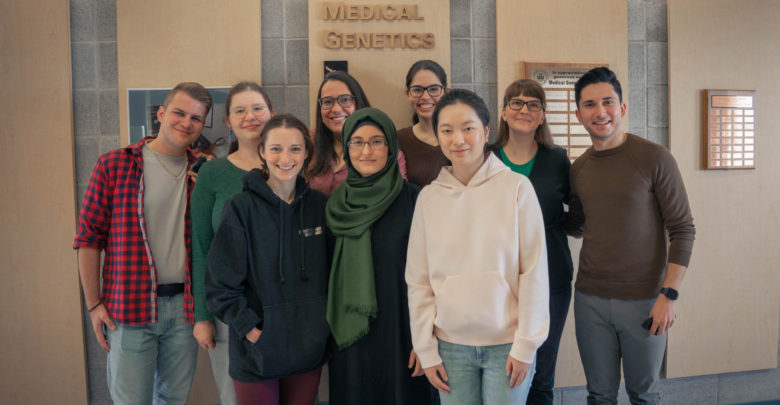 Supplied
SuppliedMultiple sclerosis (MS) is a chronic neurodegenerative disease in which demyelination occurs. Demyelination is where the myelin — or fatty lining of a neuron — erodes, leading to damage in the central nervous system.
Over 90,000 Canadians are affected by MS. It can cause bodily impairment ranging from blurred vision, to complete lack of muscle coordination and paralysis. Anastassia Voronova, an assistant professor at the University of Alberta and Canada research chair in Neural Stem Cell Biology, has done research on how to reverse demyelination.
In her research, published in Stem Cell, Voronova has discovered a way to target remyelination. This involves direct infusion of the brain molecule, fractalkine, which triggers the production of myelin.
She dietarily induced demyelination in the brains of mice to mimic the brain damage apparent in MS patients. She then injected fractalkine directly into their brains. The molecule consequently enhanced remyelination in the white and gray matter areas of the brain, despite experiencing damage from MS.
Fractalkine triggers progenitor cells — descendants of stem cells which can create specialized cell types — in the brain to make new oligodendrocytes, which are the only brain cells that produce myelin. It also lessens neuroinflammation common in MS.
Both of these events are necessary for the enhancement of remyelination by fractalkine, which Voronova said is “predicted to halt the disease progression, and maybe even reverse some of the neurological symptoms that are associated with MS.”
Voronova described the existing progenitor cells as “lazy.” They should know how to regenerate oligodendrocytes for remyelination, but are inefficient — especially in MS patients.
Myelin deficiencies are detected in a variety of neurological disorders, such as Huntington’s, Parkinson’s, and Alzheimer’s disease. Myelin deficiencies can also be found in neurodevelopmental disorders, including autism, schizophrenia, epilepsy, and traumatic brain injuries.
“What we are also excited about is whether we can test the ability of fractalkine to promote brain regeneration in … mouse models of other neurological disorders. Maybe this could be translated to a variety of different conditions, and not just something specific for MS,” Voronova said.
Voronova and her research team are searching for ways to deliver fractalkine to the brain, such as a nasal spray.
Stem cells may play a role in further research on brain regeneration, according to Voronova
Fractalkine is the molecule of interest in her recent study. But, Voronova’s research program aims to discover new molecules that can trigger progenitor cells to cause brain regeneration.
Stem cells are set aside during embryonic brain development. But, they do not have a fixed function and are otherwise dormant throughout adulthood. The question of whether it is possible to resurrect embryonic cues in adult stem cells for use in neural regeneration drives Voronova’s research.
“This was actually a serendipitous discovery … I started my journey in science by asking ‘how do stem cells behave during brain development?’”
Voronova wanted to understand how neural stem cells communicate with neurons in close proximity within the developing brain.
“I discovered that these neurons were secreting so many different molecules — including fractalkine —that then instructed the neural stem cells to make oligodendrocytes in the developing brain,” she said.
“Now my research program is built on translating this developmental discovery … to engage the adult neural stem cells for brain regeneration.”
The process of reactivating these embryonic cues remains unknown, but Voronova is making progress with her research.
“I think it was 30 years ago it was realized that we have adult neural stem cells. We didn’t know what they were doing there. And now, I think we definitely understand their promise. But, we don’t necessarily understand how to harness the promise,” Voronova said.
“It’s learning the signalling molecules and signalling pathways that were once important in the embryonic [stages] of brain development and then seeing whether I can reactivate those same signalling pathways in the adult brain, as well.”
Every year, The Gateway publishes hundreds of articles like the one you just read that are free for everyone to access. But The Gateway needs your support to continue publishing its award-winning journalism. Please consider donating today, even a small amount can help the University of Alberta’s only newspaper continue serving the campus community. Thank you.




